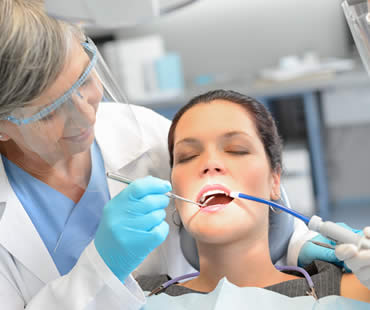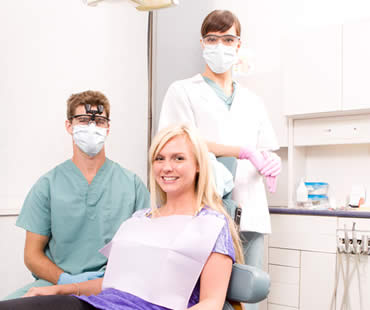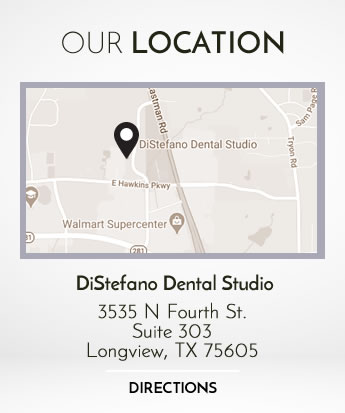
Giving some form of a sedative medication to patients during dental treatment is what sedation dentistry is all about. It causes relaxation and decreases anxiety so that the patient is comfortable and the dentist can work safely and efficiently. Sedation dentistry is most popular for those who experience mild to moderate dental anxiety, patients who have dental phobias, and children who are frightened by dental visits.
There are a number of advantages that sedation dentistry offers to both patients and dentists. Here are some reasons that it is popular with patients:
- Pain is diminished so that the patient hardly feels the instruments, needles, or anything else as part of the treatment.
- Awareness is reduced so that that patient doesn’t realize exactly what is happening and doesn’t keep track of the time spent in the dental chair.
- Anxiety is lessened so the patient feels calm and carefree while undergoing treatment that normally might cause upset.
- Side effects are minimal and rare, making sedation dentistry both safe and effective.
- The gag reflex is reduced so patients who might normally have problems gagging during treatment are able to undergo procedures without issues.
- Time is saved for the patient because often all treatments can be performed in one office visit, instead of having to make several trips and miss more time from work or other activities.
Dentists enjoy benefits of sedation dentistry as well:
- Patients are more cooperative and able to sit still during treatment, allowing dentists to get the job done with less trouble.
- Multiple procedures can be done in a single office visit, so the dentist can accomplish more in a single time slot.
- Reflexes of the patient are more controlled so that movement is less haphazard and the dentist can work more efficiently.
Schedule your appointment at our Longview dental office

In order to ensure your comfort and ease during a dental procedure, sedation dentistry is often the best option. Many levels are available, including conscious oral sedation, inhaled sedation, and intravenous (IV) sedation.
Conscious oral sedation minimizes patient anxiety while allowing the patient to remain partially alert. Oral sedatives are used to accomplish minimal to moderate sedation. They come in the form of a pill, and are often taken within an hour of your dental procedure. Some dentists recommend a mild oral sedative the night before an appointment to ease anxiety and ensure a good night’s rest.
Depending on the dosage and on the individual recipient, an oral sedative can sometimes cause the patient to “doze off,” but the patient will never be fully unconscious and will awaken with a gentle shake. Even though you are never fully asleep during conscious oral sedation dentistry, you may not drive yourself home because you will not be fully alert.
Inhaled sedation utilizes nitrous oxide, also known as “laughing gas.” This gas is inhaled through a mask while your dentist controls the amount you receive. This type of sedation allows a patient to relax and to be fully comfortable, but to still be responsive. Nitrous oxide sedation has a tendency to wear off quickly. Because of this, you may be able to drive yourself home after your procedure.
IV sedation (sometimes known as “sleep dentistry”) provides the deepest, most relaxed sedation during dental procedures. Despite the name, IV/sleep sedation does not cause you to completely lose consciousness. Because the drugs used naturally produce a full or partial memory loss while active in your system, you may not remember anything that happened during your procedure. IV sedation is the fastest of the sedation dentistry methods. The amount of sedation is controlled by your dentist. You should not drive after IV sedation, as you may not be fully alert for a period of time.
Talk to your dentist about which sedation is right for you to ensure your dental procedure goes well and that you are comfortable throughout treatment.
Schedule your appointment at our Longview dental office

If you are either planning to undergo cosmetic dental procedures or necessary treatments for dental problems, there is a case to be made for considering sedation dentistry. Sedation dentistry refers to the use of medications in varying forms to calm and relax you prior to and during a dental procedure. Just a few reasons to consider dental sedation include:
- Dental sedation can be used for essentially all regular dental procedures. Under sedation, your dentist can accomplish far more in one appointment, meaning less overall time for you in the dental chair. Procedures that may normally take 2 or 3 visits to the dentist can be completed all in one visit with the help of dental sedation.
- Normally, dentists do not like to work on both sides of the mouth at the same time as this requires anesthesia to each side and could cause the patient to bite their tongue. Sedation dentistry allows your dentist to work on both sides of the mouth in one sitting.
- Dental sedation allows you to feel relaxed and free from stress while the actual procedure is being performed. In many cases, even though you are still conscious, you will not remember any of the actual time you spent in the dentist chair.
With sedation dentistry, there is no need to dread dental treatments and procedures. Your fears and anxiety should not deter you from seeking the cosmetic or restorative dental care that you desire. Consult with your dental professional about the options offered for sedation, and schedule your oral care with the confidence that you will have a calm and pleasant experience while improving your smile.
Our dental office is located in Longview

Many types of cosmetic dentistry procedures such as crowns, bridges, tooth implants, or other invasive procedures require some kind of anesthesia in order to be performed in comfort for the patient. Even a procedure like porcelain dental veneers can be aided by the addition of some kind of sedation dentistry, especially if the patient is experiencing anxiety or fear regarding the treatment. For any patient seeking a more relaxed cosmetic dental experience, sedation dentistry presents several options.
Inhaled sedation, or nitrous oxide, is more commonly known as “laughing gas.” It is inhaled via a mask and is controlled by your dentist. It is a light sedation, and allows you to remain completely responsive and compliant to instruction. Nitrous oxide sedation wears off quickly; because of this, you may be able to drive yourself home after your treatment.
Conscious oral sedation reduces your anxiety while still allowing for responsiveness to requests and directions. Oral sedatives are typically prescribed in pill form, and can be taken up to an hour before your dental procedure. Some dentists believe that taking a mild oral sedative the night before treatment can alleviate anxiety and ensure proper rest. You should not drive yourself home if you have taken an oral sedative for your dental treatment. You will not be fully alert.
IV sedation is also known as “sleep dentistry.” It provides the most relaxed dental experience, allowing you to be deeply sedated while never completely unconscious. A natural effect of the drugs is full or partial memory loss of the time during its use, so you may have no memories of your procedure. You should never drive following IV sedation, and you may not be fully alert for several hours. Plan to go home, rest, and sleep.
Your cosmetic dentist wants you to be comfortable throughout your dental therapy and will know which sedation dentistry option is right for your particular cosmetic dentistry procedure. Talk to your cosmetic dentist today about any concerns you have regarding your treatment so that you may have the most positive, pain and anxiety-free experience possible.
We look forward to seeing you in our Longview dental office

Once you and your dental professional have agreed on conscious dental sedation for use during your dental treatment, there are a variety of ways in which it can be administered.
Inhalation sedation or the use of nitrous oxide (laughing gas) is a light form of conscious sedation. Your sedation dentist will administer a combination of nitrous oxide and oxygen through a mask that is placed over your nose. During the procedure, you inhale the gas through your nose and back out through your mouth. Nitrous oxide wears off almost immediately upon completion of the procedure with minimal to no recovery time or side effects.
Oral medication used for sedation purposes produces medium or moderate sedation effects, depending on the strength of the prescription administered by your sedation dentist. Oral sedation usually comes in pill form and is taken approximately one hour prior to the procedure. You may feel sleepy, but should still be able to respond to your dentist’s commands. Recovery time is longer with oral sedation, and requires someone to drive you home. Side effects are rare, but may include nausea or vomiting.
Another moderate form of conscious sedation is intravenous (IV) sedation. In the case of IV sedation, the drugs are administered directly into your veins through a needle. The effects of IV sedation are much quicker than oral sedation. IV sedation allows your dental professional to adjust the levels of sedation during treatment. With IV sedation, you may begin to feel alert soon after the medication has stopped; however, you should not drive or operate heavy machinery for at least 24 hours after the procedure.
Conscious sedation should only be performed by a dental professional with appropriate training. Your sedation dentist will consider your health history when choosing the appropriate form of sedation to best suit your needs. While conscious sedation is considered safe, it is best to work with a qualified sedation dentist to determine the best form of administration for your dental treatment.
If you need a dentist in Longview contact us today

Sedation dentistry provides a way for those who experience anxiety or fear about visiting the dentist to get the treatment they need. It is also helping in relieving pain, and enabling more dental work to be performed in one visit. Two common methods of administering sedation are oral and intravenous (IV). Each type has its own unique characteristics and attributes.
Oral sedation involves swallowing pills or liquids. There are no shots, which is good news for patients afraid of needles. However, oral sedatives are less predictable because each medication affects people differently based on age, weight, medical history, and more. Also, there is a time delay between swallowing it and taking effect. Since the medication is absorbed through digestion, it is difficult to alter the sedation level quickly during treatment. Nearly all patients respond well to oral sedation, with few occurrences of any side effects. Patients typically don’t remember anything that occurred during treatment.
IV sedation means that the medication goes directly into the blood stream though an IV injection. A very powerful method, the effects are instant once the shot is given. If the medication begins to wear off, more can be administered through the IV for immediate results. IV sedation is very common during oral surgeries, which benefit from the ability to alter the medication dosage as needed. It is advantageous for long procedures or when multiple treatments are being done in one sitting. Patients will not remember the procedure or sometimes even the appointment at all. The biggest drawback of IV sedation is for patients who dislike needles. IV sedation requires that the dentist have special training and certification, so make sure that your dentist is qualified if this method is offered.
Both types of sedation can be effective depending on the situation and patient. Discuss your case with your dentist to help you decide which one might be the best for you.
We look forward to seeing you in our Longview dental office









